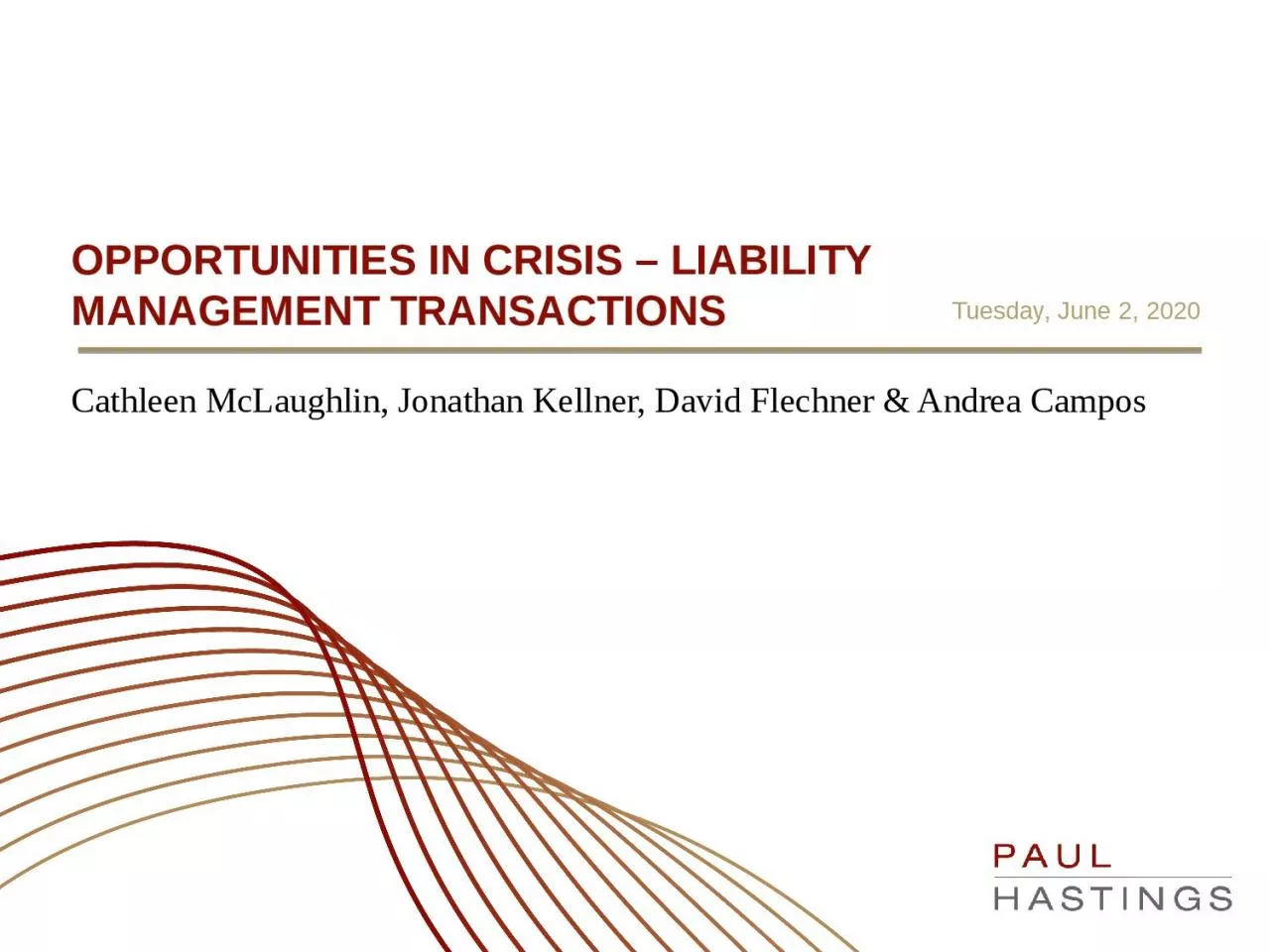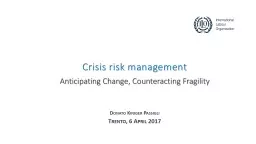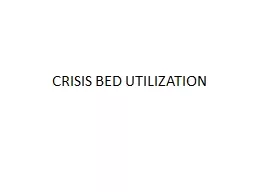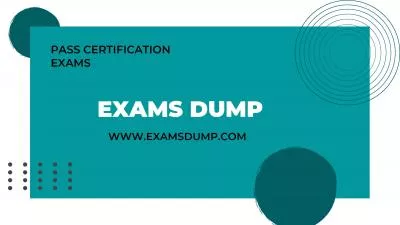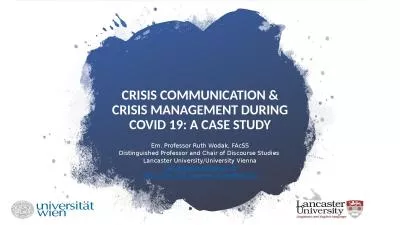PPT-OPPORTUNITIES IN CRISIS – LIABILITY MANAGEMENT TRANSACTIONS
Author : byrne | Published Date : 2023-11-06
Cathleen McLaughlin Jonathan Kellner David Flechner amp Andrea Campos Tuesday June 2 2020 Liability management overview Transactions designed to restructure debt
Presentation Embed Code
Download Presentation
Download Presentation The PPT/PDF document "OPPORTUNITIES IN CRISIS – LIABILITY MA..." is the property of its rightful owner. Permission is granted to download and print the materials on this website for personal, non-commercial use only, and to display it on your personal computer provided you do not modify the materials and that you retain all copyright notices contained in the materials. By downloading content from our website, you accept the terms of this agreement.
OPPORTUNITIES IN CRISIS – LIABILITY MANAGEMENT TRANSACTIONS: Transcript
Download Rules Of Document
"OPPORTUNITIES IN CRISIS – LIABILITY MANAGEMENT TRANSACTIONS"The content belongs to its owner. You may download and print it for personal use, without modification, and keep all copyright notices. By downloading, you agree to these terms.
Related Documents

